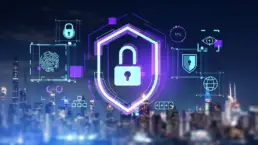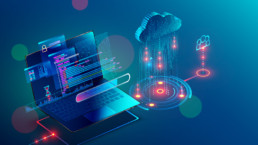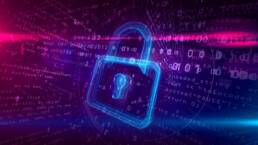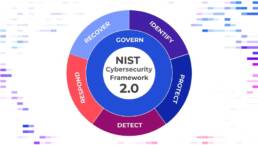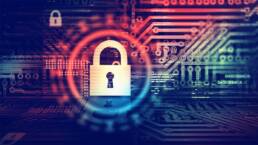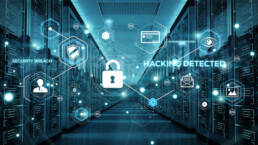While the nations of the world have been focused on combating the coronavirus pandemic, another infection has been impacting organizations all across the globe. The surging ransomware epidemic has resulted in billions of dollars in losses.
This specific form of malicious software has even been deployed to cripple key infrastructure like pipelines and grain co-ops.
Unfortunately, the ransomware epidemic is showing no signs of slowing down. In fact, leaders in the cybersecurity space predict that these trends are going to continue. Therefore, it is vital that you take steps to proactively guard against cyberattacks and ransomware. The future of your business will depend on it.
Below, we’ll discuss just how serious the ransomware epidemic has become. We also identify how you can safeguard your network through an innovative cybersecurity solution.
What Is Ransomware?
While you have certainly heard phrases like “malware,” “computer virus,” and “ransomware,” you may not be quite sure what the difference is between these terms.
A computer virus is a broad term used to describe one of many different types of malware or malicious software. The most common types of malware include adware, spyware, worms, keyloggers, trojans, and ransomware.
Over the last few years, ransomware has become the go-to form of malware used by most hackers. According to Investopedia, ransomware is a specific type of malware used to “hold a user’s computer system hostage until a ransom is paid.” Hackers leverage ransomware to commit extortion.
Ransomware encrypts the files on a computer, thereby preventing the owner or company from accessing essential data. In order to access the files, the organization must have the encryption key. Hackers withhold this key until they receive a ransom.
Many hackers request payment in cryptocurrency, as this is believed to be more difficult to trace.
By the Numbers: Shocking Ransomware Statistics
Every year, the Federal Bureau of Investigation’s Internet Crime Complaint Center publishes an “Internet Crime Report.” According to the 2020 report, the ICCC received a total of 791,790 complaints of internet crime.
The organization has experienced a year-over-year increase annually, with 2020 being the highest total to date. The majority of the complaints pertained to phishing and non-payment or non-delivery issues.
Specifically, ransomware attacks only accounted for 2,474 of the complaints received by the ICCC. This resulted in roughly $29M in losses. However, it is important to note that BEC or “business email compromise” is a common means of delivering ransomware.
The 2020 FBI ICR states that there were nearly 20,000 instances of BEC, which resulted in over $1.8B in losses.
As you can see, the threat of ransomware is all too real. Hackers are using this form of malware to target businesses of all sizes and hold their data hostage to the tune of billions of dollars.
How RaaS Is Fueling the Surge in Ransomware Attacks
Like millions of others, you are probably wondering what created the ransomware epidemic. While this disturbing trend cannot be attributed to any one factor, RaaS has certainly fueled the recent surge in ransomware attacks.
Ransomware as a Service (RaaS) follows a similar business model to Software as a Service (SaaS). However, the providers are not businesses that are looking to make an honest profit while serving their customers. Instead, RaaS is offered to bad actors by skilled ransomware developers.
The RaaS model is as follows:
- A ransomware developer creates custom code.
- The code is licensed to an “affiliate”
- The affiliate carries out an attack
- The victim’s files are encrypted and held hostage
- The victim pays the ransom
- The affiliate shares part of the ransom with the developer
Many developers prefer the RaaS approach because they expose themselves to less risk. All they have to do is create the ransomware and license it to an affiliate. The larger number of people they license their code to, the more profits they will generate.
The RaaS model allows less talented individuals to efficiently carry out ransomware attacks. Since a developer can license their ransomware to multiple people, the RaaS model is increasing the frequency of this profitable cybercrime.
Pending Government Legislation That Could Change the Cybersecurity Landscape
Bipartisan efforts to curb the surging tide of ransomware attacks have led to the creation of several cybersecurity proposals. One or more of these bills could make it to the oval office before year’s end. These pieces of legislation are aimed at improving government response to ransomware attacks that target critical infrastructure. Some proposals also lay the framework for more stringent cybercrime reporting mandates.
More than $5 billion in transactions related to ransomware have occurred in 2021 and already exceed 2020 totals. The U.S. government recognizes the increasing threat ransomware is to the U.S. financial sector, businesses and the public. This activity led to the U.S. Treasury department issuing a stern warning to businesses last October that facilitating ransomware payments could trigger reporting requirements. Since the warning, U.S. firms reporting ransomware payments have surged and reporting requirements regarding ransomware payments now seem almost certain.
In addition, congress has added dozens of cybersecurity measures into the annual defense authorization bill. This bill has already passed the House and is being presented to the Senate. Among other things, the bill includes $500 million in cybersecurity grant funding, language designed to protect the CISA director from political influence, and the creation of a State Department program that incentivizes the reporting of cybersecurity vulnerabilities.
If this bill is passed as-is, then your company may be able to access cybersecurity grant funding in the near future. These resources can be used to make improvements to your existing infrastructure. While the federal government is taking a proactive approach to the ransomware epidemic, all of this legislation is still pending final approval. In the meantime, your organization must take steps to avoid falling victim to cybercrime.
MXDR: The Best Line of Defense
If you want to inoculate your business against ransomware, then you must modernize your cybersecurity program. While there are many cybersecurity options on the market, the best solution for combating ransomware is known as managed XDR.
XDR or extended detection and response technologies are an evolved form of endpoint detection and response software. XDR actively analyzes the endpoints of servers, networks, cloud resources, and your other digital assets to ensure that they are protected against a variety of threats.
Implementing XDR cybersecurity solutions on your own is incredibly difficult, especially for small to medium-sized businesses that have limited IT resources. A managed security service provider (MSSP) can deploy managed XDR assets so that you can guard against the dynamic capabilities of today’s threat actors.
Cybersecurity in Dallas from Zyston
During a recent discussion on the ransomware epidemic, Zyston CEO Craig Stamm had this to say: “Cyber-attacks are at unprecedented levels, and they are only going to get worse. Cybercriminals are getting more sophisticated, and businesses need to combat this not only with internal expertise but also with external third-party resources that specialize in staying on the cutting edge of cybersecurity.”
Zyston is the premier Dallas managed security service provider. The company offers comprehensive managed XDR services that can help protect your business from the looming threat of ransomware and other cyberattacks.
For a limited time, Zyston is offering an introductory CyberCast Snapshot. In just a few short minutes, you can establish your security program’s maturity and get a sense of how it compares to industry benchmarks. Request your free CyberCast Snapshot today!
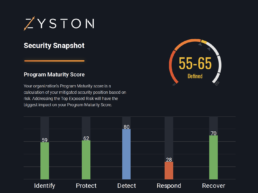
CyberCast Security Reporting
Security reporting that speaks business
Zyston CyberCAST brings the world of cybersecurity metrics up out of the weeds and into the hands of executive decision makers so nothing gets lost in translation. With CyberCAST, your organization gets clear visibility on security risks and also how your organization scores against your industry peers.












